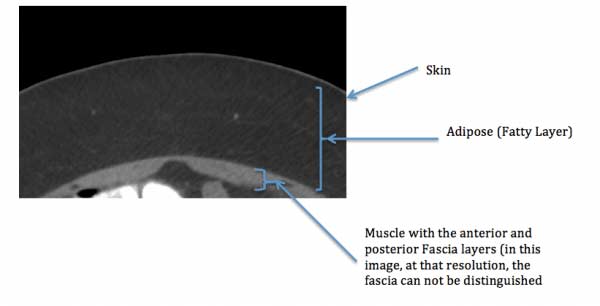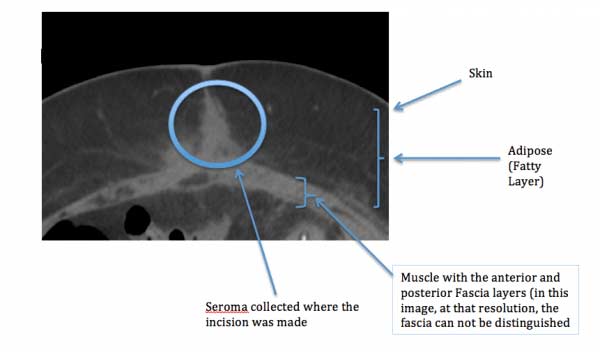Tag: plastic surgery
Seroma
September 21, 2016 12:06 pm
A seroma is a collection of a serum that builds up under the skin or between tissue layers, usually at surgical sites or where tissues has been removed. The development of a seroma usually doesn’t appear for a week or so after surgery or drains are removed.
The best way to understand a seroma formation at an abdominal site is to know the anatomy of the abdominal wall. The abdominal wall has a number of distinct layers. Starting from outside to inside they are: the skin, adipose (fatty layer), muscle and then the peritoneal. I should mention that this is over simplification since depending on what part of the body we are specifically looking at the thickness of each layer may be different. Additionally, there may be other fascia or muscle layers that overlap at certain places that do not for example in the midline.
The skin is self explanatory, it is a protective layer.
The fatty layer, underneath the skin layer, is where energy is stored. The key with this layer is that there are very few blood vessel and lymphatic channels located in this layer. From a metabolic standpoint, fat is not very active so there is no need for it to have significant amount of circulation, unlike a skeletal muscle that may be involved with movement of large bones for example.
The muscle layer is well drained by lymphatic system and has excellent venous and arterial supply and drainage.
The peritoneal cavity is where the organs are encased with in the peritoneum (thick membrane).
When an incision is made, it traverses thru all the planes of the abdomen, from the skin all the way down to peritoneal. The fatty layer, as mentioned above lack lymphatic channels and drainage. Its’ blood supply, arteries and veins are sporadic. This results in an environment with poor drainage properties. Any small amount of fluid either left behind from irrigation, or any fluid that collects in the tissue, caused by the swelling , inflammation which results from the injury of the surgery, can potentially collect.
There are a number of ways to help prevent seroma formation, however, depending on the individual, their health status, inflammatory response, healing process, medications, etc. they may still form. In order to provide for a way for the fluid to drain a number of things can be done. Sometimes different drains are placed within the fatty layer allowing the fluid to drain out or collect in the drain. Another technique is to close the incision with skin staples far apart, allowing the fluid to drain between the staples. I close the incisions with the absorbable stiches, but leave the top and the bottom of the incision open by 1cm (1/4”). These openings in the incision allow for natural drainage of fluids out of the abdominal space, which we want. These openings also allow me to gently place a sterile q-tip in the office to make sure there is no fluid collection and to drain if any has formed. Wearing compression binders or garments can help to reduce swelling and risk of seroma formation.
As healing takes place seromas may reoccur and need draining. Although they are bothersome seromas are rarely serious and will eventually resolve with healing and if needed draining. The fluid draining from an incision should be thin and clear, yellowish clear or pink clear. It should not be milky, thick, purulent, or green. If you are experiencing anything out of the ordinary, please do not hesitate to call your surgeon.
- Weight loss Medications compared to surgery February 20, 2024
- SIPS-SADI and ASMBS December 31, 2023
- Survey December 16, 2023
- Long Term Outcome Survey December 1, 2023
- Weight Loss Injection May 10, 2023


